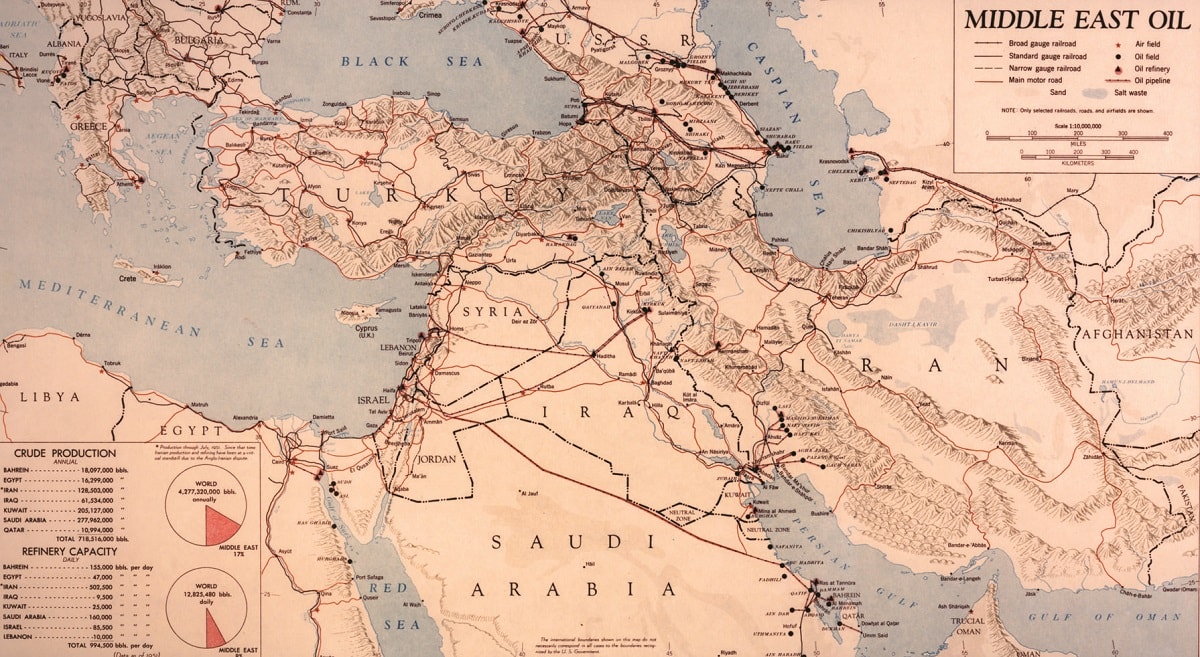The recent initiative by Beijing to get Riyadh and Tehran talking has caused much hullabaloo in Washington. But diplomacy, let alone conflict, has proved difficult in deserts, and these developments are the natural consequences of Washington’s recalibration of its regional role.
Since its costly and misguided adventures in Iraq and Afghanistan, the United States is discarding its erstwhile game plan of onshore interventionism for offshore balancing. In other words, Washington has scrapped the idea of direct interventions in the Middle East to pursue a relatively more guns-off approach to securing its interests and those of its allies. Such a strategy of restraint is a product of earlier experiences and bitter history. In the 1970s, the United States suffered a humiliating defeat in Vietnam. The lesson was straightforward: costly adventurism came with an exorbitant price. Washington soon jettisoned the idea of putting boots on the ground in Asia. Offshore balancing – demonstrating offshore naval power and enhancing local balancing partnerships with regional powers – replaced the strategy of direct intervention. The US Navy’s Seventh Fleet was a crucial component in such a strategy of maintaining a regional balance.
For the next three decades, offshore balancing nurtured a new strategic equilibrium in Asia. The Seventh Fleet ensured that sea lines of communication and trade were free and open. Beijing’s bonhomie with Washington for its economic growth also paved the way for regional stability and prosperity. Given the absence of great power rivalry, the Association of Southeast Asian Nations (ASEAN) doggedly pursued economic growth. Therefore, Asia’s regional stability and economic growth were by-products of keeping geopolitics tempered through realist restraint.
Similarly, after having burnt its fingers in Iraq and Afghanistan, Washington is fashioning a new approach to conducting its Middle East policy. President Joe Biden stemmed the bleeding in Afghanistan early in his tenure by cutting loose and withdrawing. Still, the prospects of overreach are rising due to simultaneous preoccupations in the Indo-Pacific and the recent imbroglio in the heart of Europe. The United States’ primary focus on China already suffers from Washington’s engrossment in Europe. In such a situation, adopting restraint in other theatres seems prudent.

Therefore, to avoid new entanglements – that drain precious resources – Washington is recalibrating its strategy in the Middle East. Like the Seventh Fleet in Southeast Asia, the Fifth Fleet that patrols the waters of the Arabian Gulf, Red Sea, Gulf of Oman, and parts of the western Indian Ocean will play a crucial role in shaping this new strategy. A modest presence in longstanding American bases in the region will also help in regional stability.
The main objectives of an offshore balancing strategy remain to secure American interests in preventing the rise of a regional nuclear power inimical to Washington and to safeguard the interests of its allies. Such a recalibrated strategy also aligns with Washington’s other core interests in the region: preventing the serpent of terrorism from hissing and protecting the oil flow.
The fact that the United States no longer solely relies on Middle Eastern energy has also diminished its appetite for regional intervention. The growth of renewable energy sources and increased domestic oil and natural gas production have fuelled restraint. Of course, Washington still cannot completely wash its hands of the Middle East’s oil, but its salience in the US strategy has decreased. The threat of terrorism has also relatively reduced in the recent past.
Three natural consequences flow from Washington’s new strategic restraint in the Middle East. First, a wariness in local allies and partners about Washington’s sincerity in safeguarding their security interests. Fearing American fatigue, regional powers such as Saudi Arabia are rapidly diversifying their partnerships with other powers. Having taken the Gulf monarchies for granted for some time, Washington will have to digest their new diplomatic outreach to other players. And in a world of sharpening great power rivalry between Washington and Beijing, the desire to corner goodies from both sides is irresistible. Therefore, it is unsurprising that the Gulf monarchies are deepening their economic links with China.
Second, given China’s enormous economic interests in the Middle East and its dependence on energy resources, Beijing is naturally expanding its regional footprint. It is further cashing in on the diplomatic and economic vacuum left by Washington. China has built expansive economic and trade ties with partners across the regional fault line – Iran and Saudi Arabia. The recently concluded Beijing-brokered thaw between Riyadh and Tehran points towards this reality.
Third, Washington’s new strategy in the Middle East calls for regional partners to do more heavy lifting in safeguarding their security interests. Growing cooperation between American allies such as Israel and Arab states the United Arab Emirates and Bahrain under the banner of the Abraham Accords to balance Iran are manifestations of this altered landscape. The United States is also inviting geographically proximate partners such as India to offer economic and strategic alternatives to mutual partners in the region. The nascent I2U2 configuration between India, Israel, the United States and UAE heralds the quest for greater regional balancing enmeshed with newfound American restraint.

